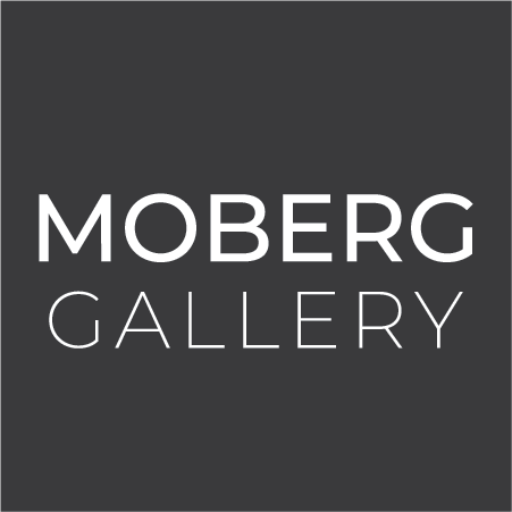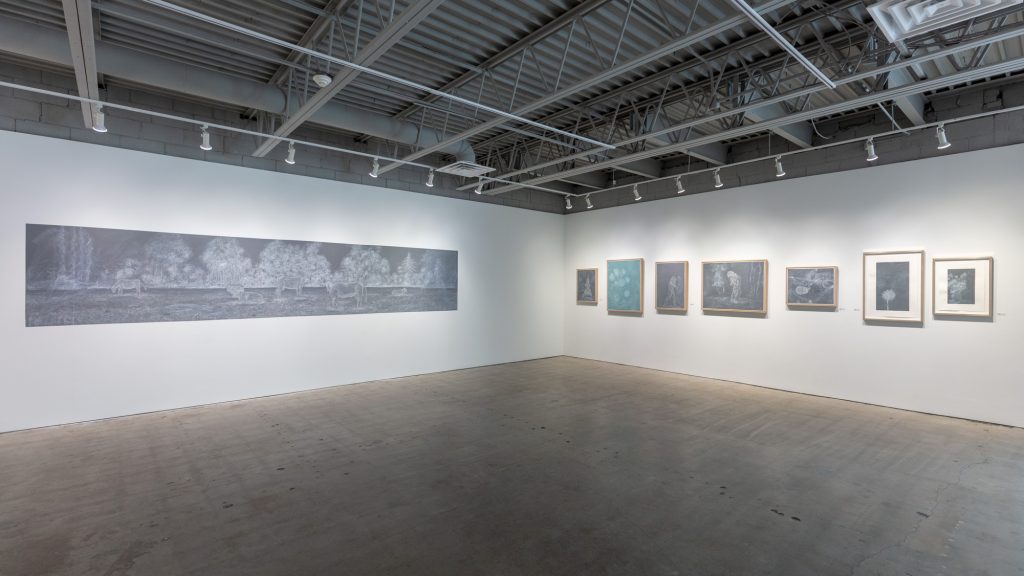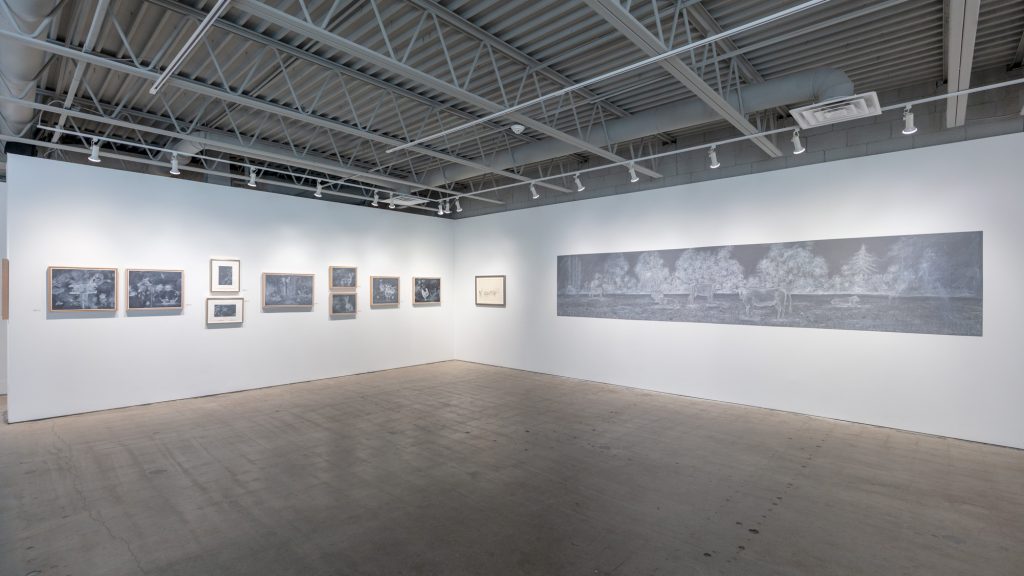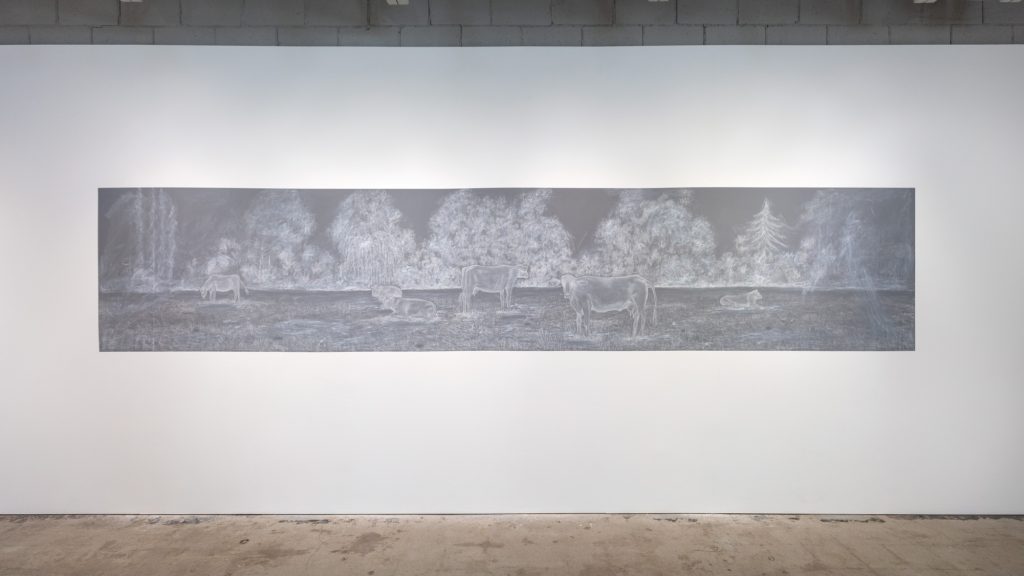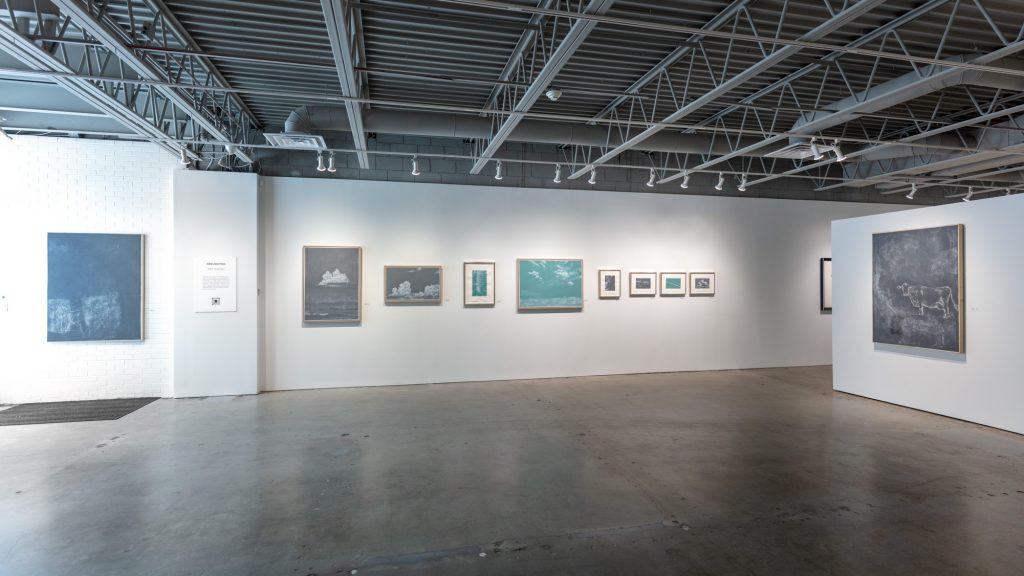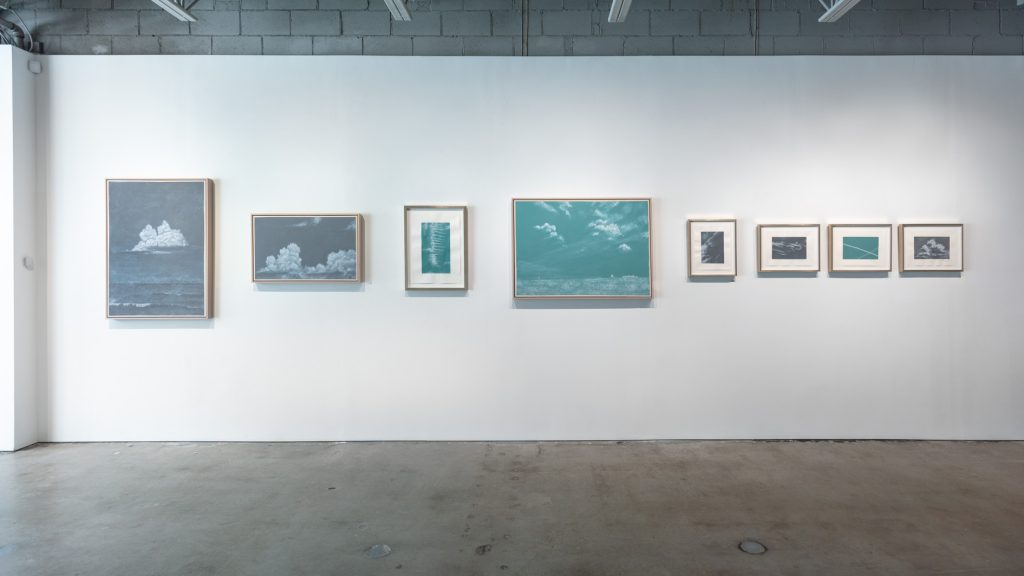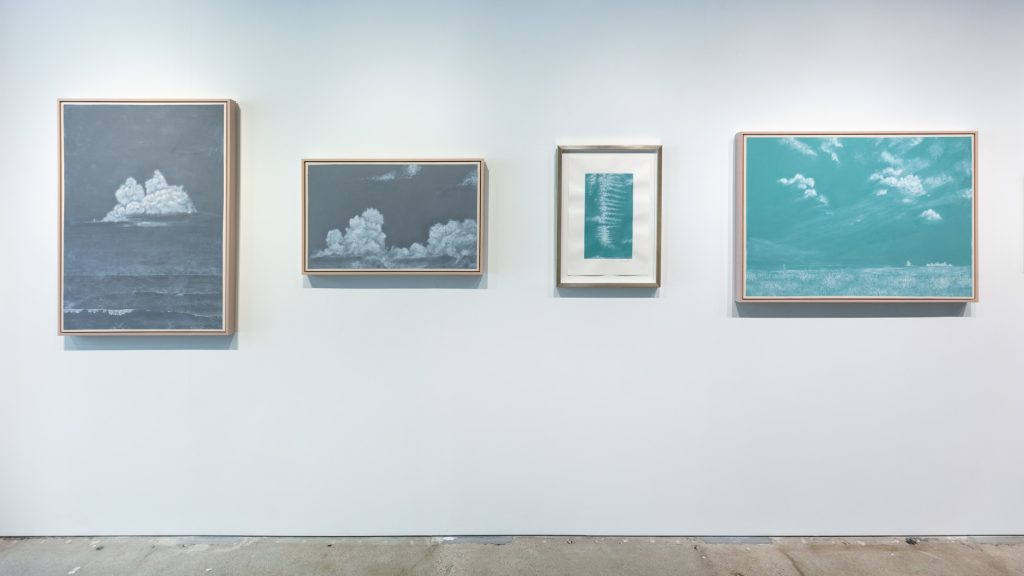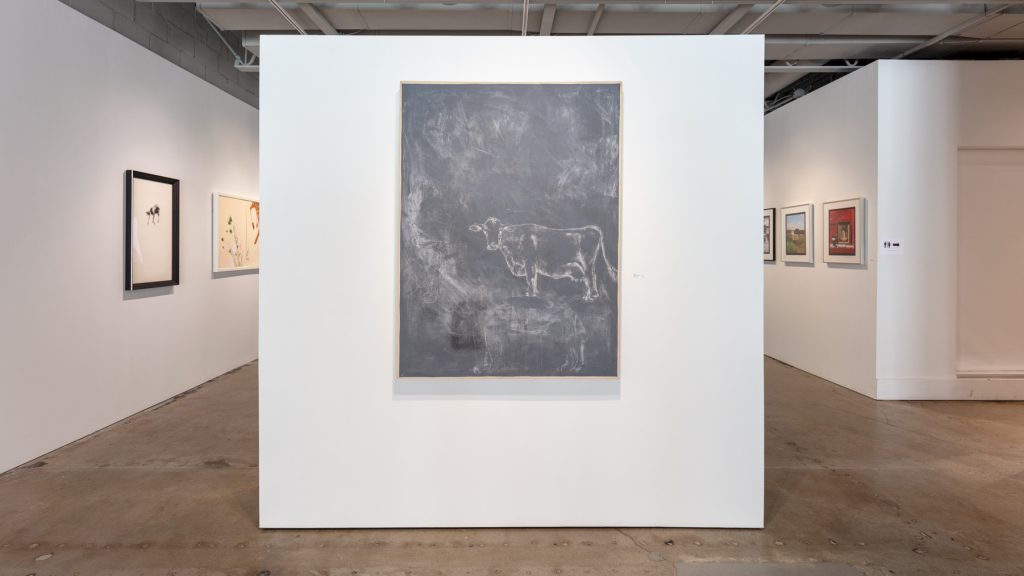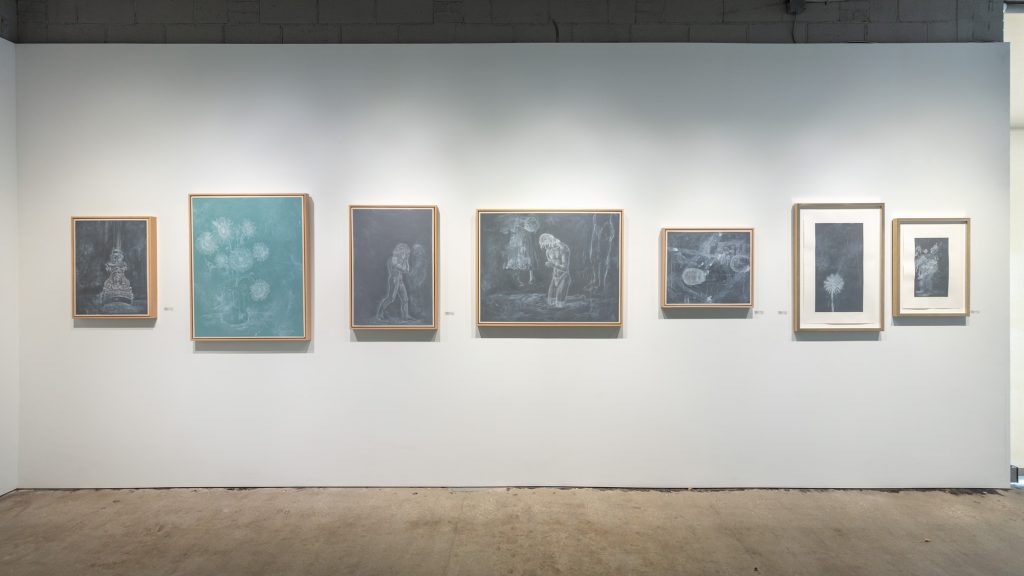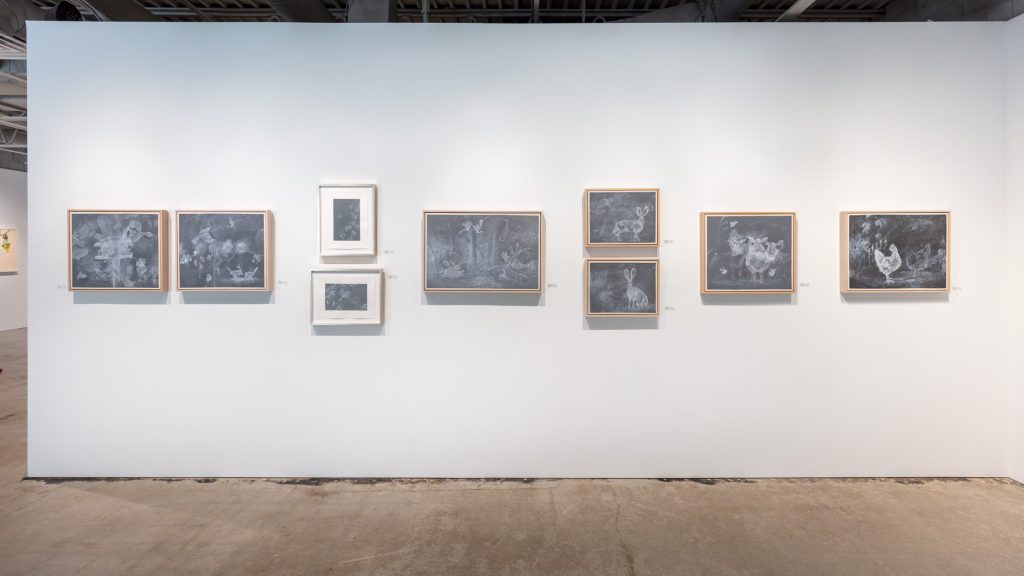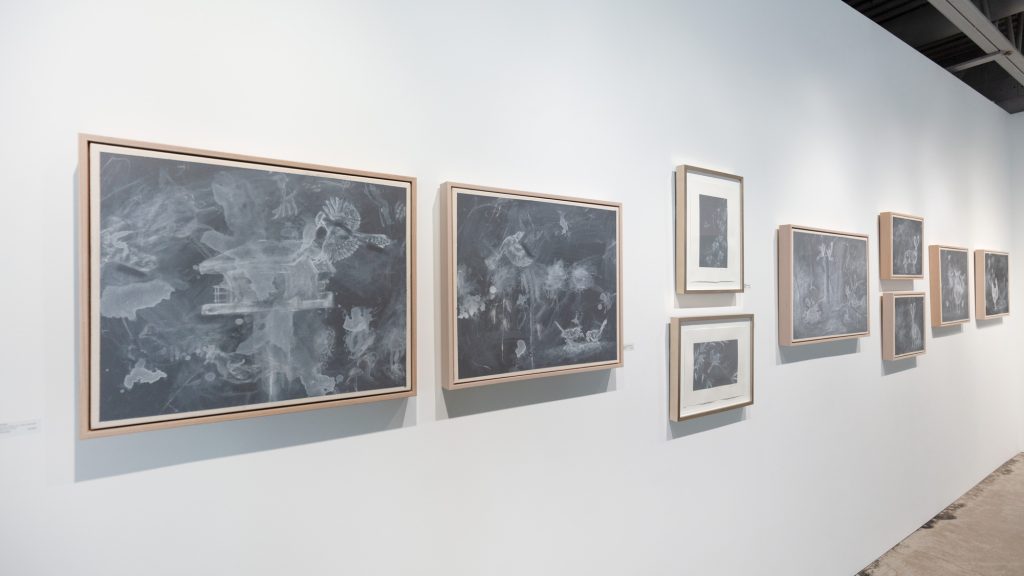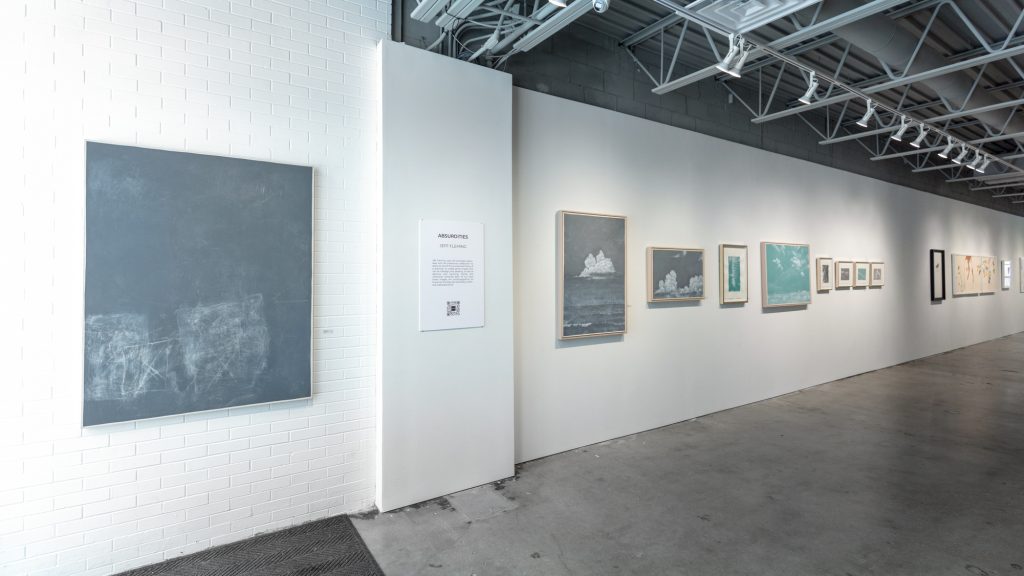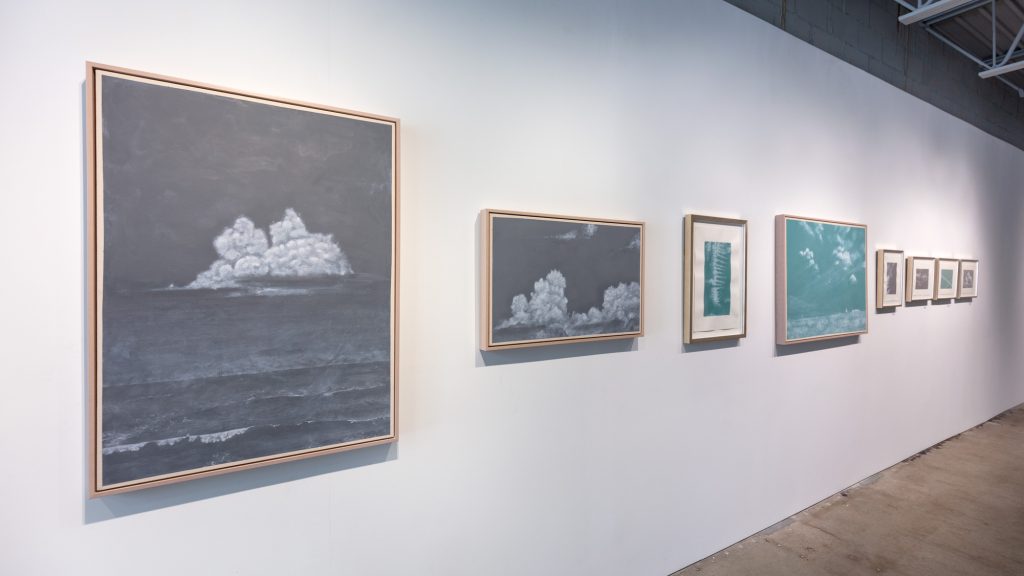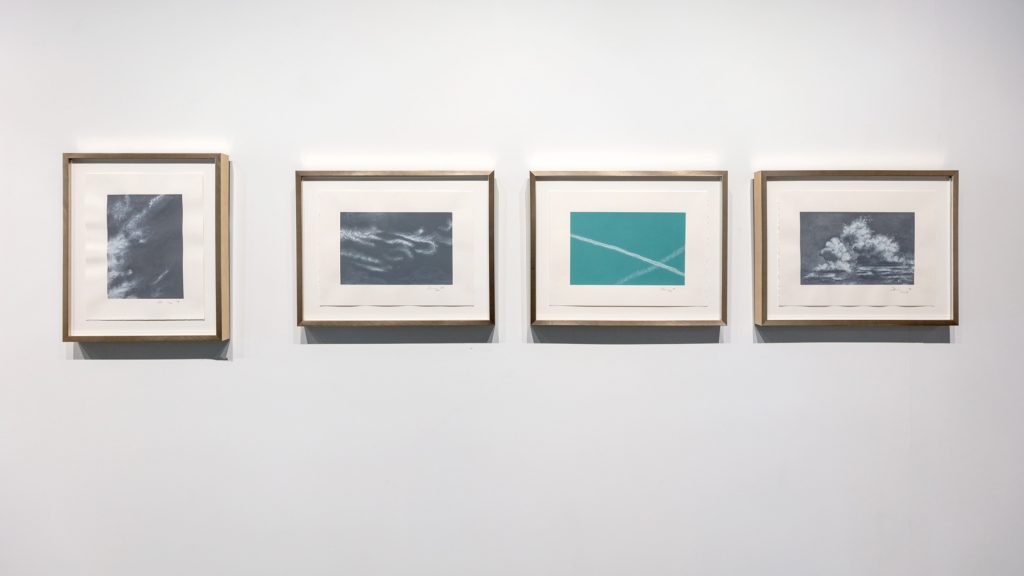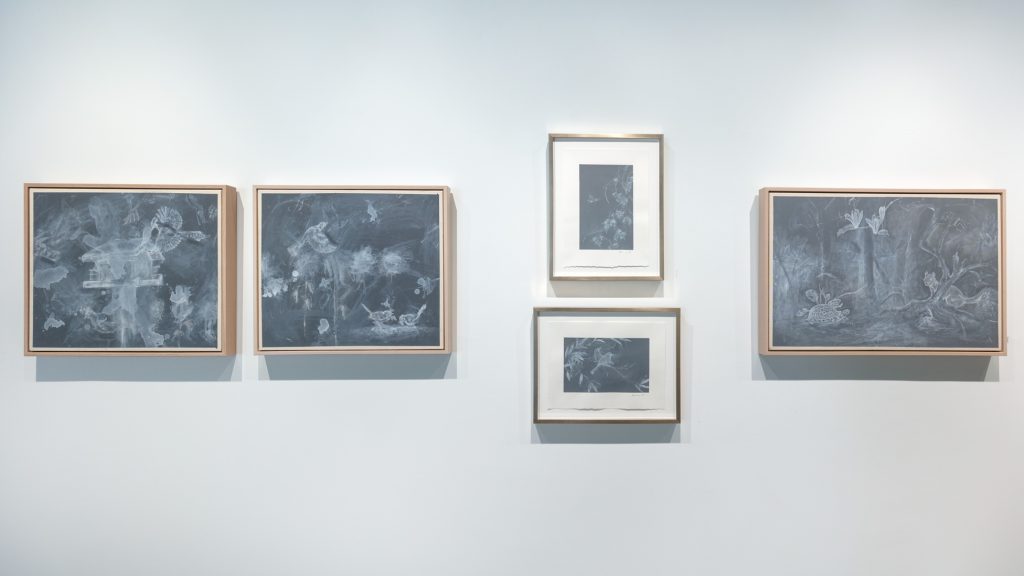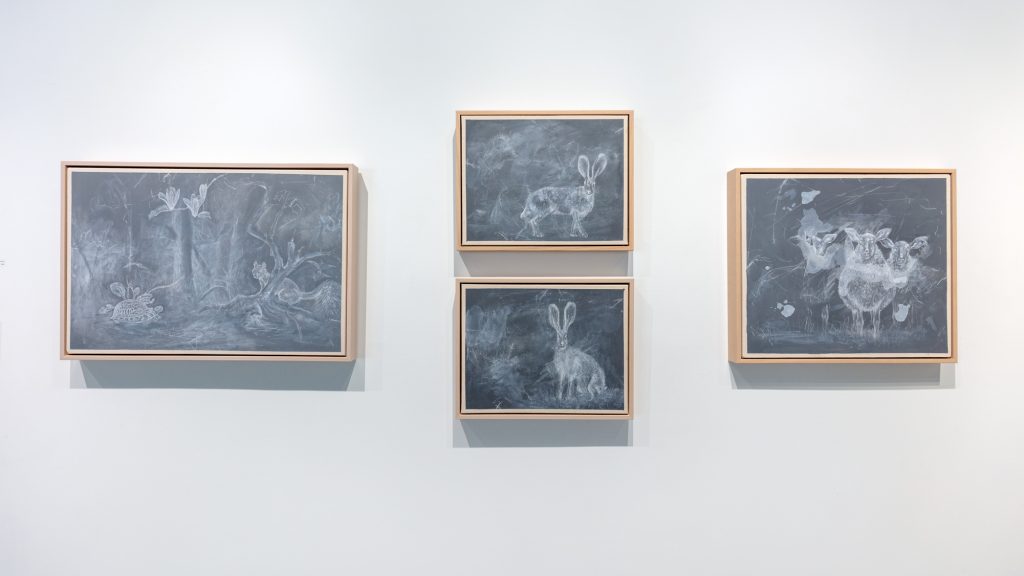Jeff Fleming | Absurdities
1995, Atlanta … 2024, Des Moines. This is the span between Jeff Fleming’s last exhibit and this month’s Absurdities. Durations in life lend themselves to many experiences, and hence, memories of those experiences. How we move through the world, and how time moves us through the world—these are key in Fleming’s drawings, as he attempts to capture marks and their erasures, with subsequent re-marking.
The ephemeral nature couched within the work make for absurd iterations of subjects that appear “ready to be wiped away.” Clouds travel the sky and dissipate; animals stop for a look and scatter or receive the human gaze with no concern at all. These sightings by Fleming have been put to canvas and paper, visually narrating moments in time and space.
Influenced by Joseph Beuys, Cy Twombly, and a love of historic objects, Fleming says his work is the “storytelling of memories; it’s drawings and the recording of drawing.” His travels across the globe were caught on camera, and it is from these photographs he often works, altering the image and solidifying it in mind, despite the media and conceptual nature of the work.
Using India ink and gesso to build up the seven-layer base of these pieces, he then uses pencil pastel and white charcoal to make line after line, again and again. The background media is meticulously mixed, and the charcoal and pencil marks are made so the subjects are “drawn exceedingly well, and the wipes are just as important.”
Fleming incorporates much finger painting, painterly and loose, also, so that the solidity of his compositions become disappeared—a slow erasure of form, moving the stillness of each subject into more dynamic evocations, which imbue the drawings with a lightness. Not only being able to “see” an end result, but the process too, is what is exciting and literally a way of “reading (between) the lines.” This, with the subject matter of animals staring back at the viewer, are absurd to Fleming. In the best possible way. These soft gray and green works hover, demanding an intimacy, which allows a true discerning of all that is happening, and has happened, within them.
Documentation from his first trip abroad, in 1980, reminds him of everything being new and special, and it represents a certain emotion for Fleming. The older pencil drawing, “Cows and Angel After the Hurricane” is from a photograph taken in France that year. And the current temporary wall drawing, “Cows,” is also created from this same photo, bringing the body of work full circle.
“Sun Boat” and “Lamppost” (both on canvas) are delicate, detailed water and city scape drawings, where the patterning in the former holds the eye with its fragmentation, and the ornate solidity of the segment in the latter balances the entire work.
“Sunflowers” (canvas) and “Flowers” (paper) are placed to the left of the picture plane for a wonderful asymmetrical balance with vases as ghost-like vessels. And while the sunflowers are crisp and refined in their petals and stems, “Flowers” is more a blurred bouquet, offering a few cuts for clear delineation.
“Box Turtle,” “Cow,” “Forest Floor,” and “Standing Rabbit” (all on canvas) bring the natural world to us via this very “sketchy” means. Most are minimal compositions, in keeping with Fleming’s insistence on giving his viewers intentional focus. “Forest Floor” is different in the longer story it tells—giving us chapters of different flora and fauna—each living thing creating a large domicile for all.
Based on sections of frescoes by Italian Early Renaissance painter, Masaccio, Fleming’s “Masaccio/Adam” and “Masaccio/Baptism” are spare and focused drawings of Adam (from Expulsion from the Garden of Eden c. 1425) and a Christian convert (from The Baptism of the Neophytes c. 1425). Both figurative works on canvas are quiet, and compositionally spotlight the male in his emotional and vulnerable positioning.
“Two Squares” (canvas) is the most abstract work in the exhibit, and it is confident in its solo status. The bottom corner of the frame keeps these, just left of center, and they complement each other against the gray background, strong in their two-dimensionality, and seemingly connected by a kindred shape/form in three dimensions.
The “Clouds” series (on both canvas and paper) and “Clouds/Ocean” (canvas) are stars in the show. Covering so many conceivable shapes and streams, over land and ocean, small and large-scale, Fleming’s clouds are a testament to both his skill and vision. And they make us feel as light as vapor. They also are perfect stories for what Fleming does with his work: mixes particles of liquid, solids, and gases, to make art we can hang and to which we can look up. While we dream of what’s next.
The wall drawing, “Cows,” will be completed by Saturday, Feb. 3, the last day Absurdities will be on view. Don’t miss seeing this piece in its different stages before it disappears forever … as well as all the works that can be taken home with you.
